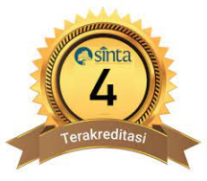the Effect of Website-Based Formative Assessment to Improve Students’ Conceptual Understanding in Dynamic Fluid Topic
Abstract
Full Text:
PDFReferences
N. A. Badruldin and S. N. Alias, “Level of Conceptual Understanding Among Secondary Students on Topic of Forces and Motion Using Half-Length Force Concept Inventory (HFCI),” ICCCM J. Soc. Sci. …, vol. 1, no. 2, pp. 12–20, 2022, doi: 10.53797/icccmjssh.v1i2.2.2022.
F. Ornek, W. R. Robinson, and M. P. Haugan, “What makes physics difficult ?,” Int. J. Environ. Sci. Educ., vol. 3, no. 1, pp. 30–34, 2008, [Online]. Available: http://www.acarindex.com/dosyalar/makale/acarindex-1423903900.pdf.
Z. Arifin, S. Sukarmin, and S. Sarwanto, “Students’ Perceptions in Developing Fluid Dynamic Concept Inventory (FDCI) Assessment Based on STEM Literacy to Measure Problem-Solving Skills: A Need Analysis,” Proc. 2nd Int. Conf. Educ. Technol. (ICETECH 2021), vol. 630, no. Icetech 2021, pp. 47–52, 2022, doi: 10.2991/assehr.k.220103.008.
T. N. Diyana, Sutopo, and Sunaryono, “The effectiveness of web-based recitation program on improving students’ conceptual understanding in fluid mechanics,” J. Pendidik. IPA Indones., vol. 9, no. 2, pp. 219–230, 2020, doi: 10.15294/jpii.v9i2.24043.
Dewi, A. Samsudin, and M. G. Nugraha, “An Investigation of Students’ Conceptual Understanding Levels on Fluid Dynamics using Four-Tier Test,” J. Phys. Conf. Ser., vol. 1280, no. 5, pp. 1–8, 2019, doi: 10.1088/1742-6596/1280/5/052037.
A. Brown, “Engaging students as partners in developing online
learning and feedback activities for first-year fluid mechanics,” Eur. J. Eng. Educ., vol. 43, no. 1, pp. 26–39, 2018, doi: 10.1080/03043797.2016.1232372.
Parno, G. A. Permana, A. Hidayat, and M. Ali, “Improving Students Understanding on Fluid Dynamics through IBL-STEM Model with Formative Assessment,” J. Phys. Conf. Ser., vol. 1747, no. 1, 2021, doi: 10.1088/1742-6596/1747/1/012008.
A. Suarez, S. Kahan, G. Zavala, and A. C. Marti, “Students’ conceptual difficulties in hydrodynamics,” Phys. Rev. Phys. Educ. Res., vol. 13, no. 2, pp. 1–12, 2017, doi: 10.1103/PhysRevPhysEducRes.13.020132.
P. L. Y. Kristian, C. Cari, and W. Sunarno, “The analysis of the mathematics concept comprehension of senior high school student on dynamic fluid material,” J. Phys. Conf. Ser., vol. 1006, no. 1, 2018, doi: 10.1088/1742-6596/1006/1/012028.
A. Suryadi and S. Kusairi, “Developing Computer-Assisted Formative Feedback In The Light Of Resource Theory: A Case On Heat Concept,” J. Technol. Sci. Educ., vol. 11, no. 2, pp. 343–356, 2021, doi: 10.3926/JOTSE.1100.
T. Hatziapostolou and I. Paraskakis, “An Investigation into the Impact of Formative Feedback on the Student Learning Experience,” Electron. J. e-Learning, vol. 8, no. 2, pp. 111–122, 2010.
R. R. Hake, “Interactive-engagement versus traditional methods: A six-thousand-student survey of mechanics test data for introductory physics courses,” Am. J. Phys., vol. 66, no. 1, pp. 64–74, 1998, doi: 10.1119/1.18809.
S. Kusairi, “A web-based formative feedback system development by utilizing isomorphic multiple choice items to support physics teaching and learning,” J. Technol. Sci. Educ., vol. 10, no. 1, pp. 117–126, 2020, doi: 10.3926/jotse.781.
S. Myburgh and A. M. Tammaro, “Pedagogies and Teaching Methods,” in Exploring Education for Digital Librarians, Chandos Publishing, 2013, pp. 211–229.
A. N. Kluger and A. DeNisi, “The effects of feedback interventions on performance: A historical review, a meta-analysis, and a preliminary feedback intervention theory,” Psychol. Bull., vol. 119, no. 2, pp. 254–284, 1996, doi: 10.1037/0033-2909.119.2.254.
DOI: http://dx.doi.org/10.24036/15669171074








